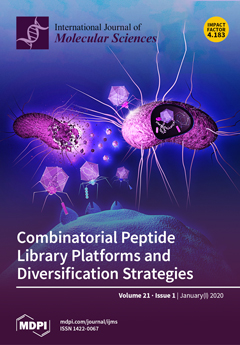The expression and biological functions of oncofetal markers GD2 and GD3 were extensively studied in neuroectoderm-derived cancers in order to characterize their potential as therapeutic targets. Using immunological approaches, we previously identified GD3, GD2, and
OAcGD2 expression in breast cancer (BC) cell
[...] Read more.
The expression and biological functions of oncofetal markers GD2 and GD3 were extensively studied in neuroectoderm-derived cancers in order to characterize their potential as therapeutic targets. Using immunological approaches, we previously identified GD3, GD2, and
OAcGD2 expression in breast cancer (BC) cell lines. However, antibodies specific for
O-acetylated gangliosides are not exempt of limitations, as they only provide information on the expression of a limited set of
O-acetylated ganglioside species. Consequently, the aim of the present study was to use structural approaches in order to apprehend ganglioside diversity in melanoma, neuroblastoma, and breast cancer cells, focusing on
O-acetylated species that are usually lost under alkaline conditions and require specific analytical procedures. We used purification and extraction methods that preserve the
O-acetyl modification for the analysis of native gangliosides by MALDI-TOF. We identified the expression of GM1, GM2, GM3, GD2, GD3, GT2, and GT3 in SK-Mel28 (melanoma), LAN-1 (neuroblastoma), Hs 578T, SUM 159PT, MDA-MB-231, MCF-7 (BC), and BC cell lines over-expressing GD3 synthase. Among
O-acetylated gangliosides, we characterized the expression of
OAcGM1,
OAcGD3,
OAcGD2,
OAcGT2, and
OAcGT3. Furthermore, the experimental procedure allowed us to clearly identify the position of the sialic acid residue that carries the
O-acetyl group on b- and c-series gangliosides by MS/MS fragmentation. These results show that ganglioside
O-acetylation occurs on both inner and terminal sialic acid residue in a cell type-dependent manner, suggesting different
O-acetylation pathways for gangliosides. They also highlight the limitation of immuno-detection for the complete identification of
O-acetylated ganglioside profiles in cancer cells.
Full article






